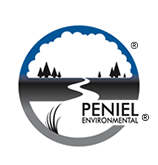Have you ever driven through your neighborhood and noticed the beautiful, glimmering icicles on other homes, maybe even your own? While they do add a form of décor to the winter wonderland themed yards they could actually be doing more damage than you realize.
We sat down with our friend Nick Jette from Premier Home Inspections to discuss ice dams, how they form and what you can do to prevent them. You can check out our video on YouTube.
Ice dams can be a huge problem here in New England. Not only can an ice dam rip off your gutters and damage shingles, but also, they frequently lead to leaky roofs, causing water damage, peeling paint, warped floors, sagging ceilings and more. If your attic insulation gets wet, it will lose R-Value (the capacity of an insulating material to resist heat flow. The higher the R-value, the greater the insulating power) and invite mold and mildew to form.
There are many ways to help prevent ice dams. Proper ventilation, insulation installation, corrects R-Value and more.
Peniel Environmental and Premier Home Inspection highly suggests hiring a qualified roofing contractor to discuss potential issues regarding ice dams.
There are things you can do yourself to help prevent ice dams. Sometimes people use heat cables on the lower end of their roof to melt the snow and stop ice dams from forming. While these seem to be effective, you are still faced with having to get electricity safely to the cables on the edge of the roof, and an extension cord is NOT safe! Heat coils should ONLY be on when there is snow on the roof otherwise you risk “cooking” your shingles, which decreases their life expectancy. You also have to make sure all debris is removed from the heat cables before using them each season. It doesn’t take much to start a fire with dry leaves and pine needles!
Another way to help prevent ice dams is to install metal snow slides along the lower edge of your roof.
While all of these can be great suggestions, your money is best spent in fixing the original problem, which resides in your attic itself.
Maybe as you read this it is the middle of winter and you already have ice dams. Let’s talk about what to do or not to do now.
DO NOT use an axe or claw hammer to break up the ice. It will most likely cause more damage to your shingles. Instead try filling a few panty hose stockings with ice melt (DO NOT use rock salt) and tie a rope to the end. Toss the stocking filled with ice melt up on the ice dam perpendicular to the edge of the roof. The goal is to slowly melt a drainage channel for any water to flow away. The rope allows you to pull the stocking down safely, no ladders needed.
DO NOT use a pressure washer; it will blast away the top layer of shingles.
If you use a roof rake, pull small amounts of snow off, gently. Avoid scraping the shingles as much as possible.
DO make sure your bathroom and laundry vents exit to the exterior of your house (not just to the attic)
If you have pull down stairs or a scuttle hole to access your attic, check the insulation and or weather stripping to minimize air flow and heat loss.
DO NOT use a space heater in your attic to try to melt the ice dam. It will likely just make problems worse.
We also had the opportunity to talk with Jeff Boufford from Boyd and Boufford Insurance regarding ice dams and your insurance policy coverage. You can check out our YouTube clip here.
Ice dams are a covered peril on a typical insurance policy. If ever in questions, please call your agent to confirm.
However, ice dam prevention is not covered. If you choose to buy heat coil or higher that professional contractor, you may not submit a receipt for reimbursement by your insurance company.
Maybe you have had ice dams in the past and you are just now noticing the damage that’s been forming. Most insurance companies will still cover that damage.
Benjamin Franklin said, “An ounce of prevention is worth a pound of cure”
We at Peniel believe educating you on concerns you may have for your home is a key to everyone’s success. If you need specific referrals, please feel free to contact us. We work closely with many different types of businesses, we know and trust these people to take care of you.
Please like us on Facebook to follow our Spotlight topics so we can continue to help educate you. And check out some more of our videos on YouTube.
Please contact us with any questions or concerns.
A big thank you to our friends at Premier Home Inspection and Boyd and Boufford Insurance for your time and information.
-“By failing to prepare, you are preparing to fail” – Benjamin Franklin

